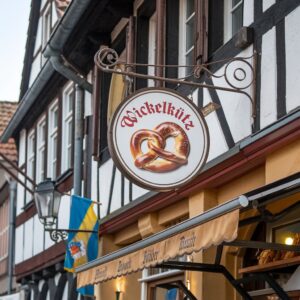Wickelkütz is a term rooted in regional language and culture, specifically from the Thüringer dialect in Germany. To truly appreciate the significance of wickelkütz, it’s important to understand both its linguistic background and its cultural implications. This comprehensive article will provide a detailed examination of wickelkütz, covering its etymology, usage, cultural context, and relevance. We’ll also answer common questions to give you a complete understanding of this intriguing term.
What is Wickelkütz?
Wickelkütz is a term that originates from the Thüringer dialect, a regional variant of German spoken in the Thuringia region of Germany. The term’s exact meaning can vary based on context, but it generally refers to a specific type of local expression or idiomatic phrase unique to this dialect.
The Etymology of Wickelkütz
The word wickelkütz is composed of regional dialect elements that are not immediately familiar to speakers of Standard German. Understanding its roots requires delving into the Thüringer dialect, which has unique linguistic characteristics and vocabulary distinct from High German.
Wickelkütz is an example of how regional dialects preserve linguistic traditions and cultural nuances that are often lost in standard language. These regional terms enrich the German language by adding layers of local flavor and historical context.
How Wickelkütz Fits into Thüringer Dialect?
Thüringer dialect is known for its diverse and colorful expressions, and wickelkütz is a reflection of this richness. The dialect itself is a blend of various Germanic influences, shaped by historical migrations and local customs.
Wickelkütz might be used in everyday conversation among locals, reflecting specific cultural practices, traditions, or even humorous anecdotes. This term exemplifies the deep connection between language and culture in the Thüringer region.
Cultural Significance of Wickelkütz
Understanding wickelkütz goes beyond its linguistic meaning; it also involves appreciating its cultural significance. In Thuringia, local dialect terms like wickelkütz often carry historical weight or refer to traditional practices that are important to the community.
For instance, local sayings and phrases can offer insights into regional customs, societal values, and historical events. Wickelkütz, as part of this rich tapestry, helps preserve the unique cultural heritage of Thuringia.
Modern Usage and Relevance
In today’s globalized world, regional dialects and their unique terms, including wickelkütz, face challenges. As standard German becomes more prevalent, regional dialects can diminish in everyday use. However, terms like wickelkütz are celebrated for their cultural value and are often preserved through local literature, folklore, and community events.
Educational programs and cultural initiatives in Thuringia strive to keep such dialect terms alive, ensuring that future generations understand and appreciate their regional heritage.
Examples and Applications of Wickelkütz
To illustrate the use of wickelkütz, consider the following examples:
- In Conversation: Locals might use wickelkütz in casual discussions, often to convey a specific sentiment or cultural reference that would be lost in standard German.
- In Literature: Regional writers and poets may incorporate terms like wickelkütz into their works to reflect the authentic voice of the Thüringer dialect.
- In Cultural Events: Festivals and local gatherings might showcase wickelkütz as part of traditional performances or storytelling.
How Wickelkütz Compares to Other Dialect Terms?
Comparing wickelkütz to other regional terms highlights the diversity within the Thüringer dialect and its relationship with other German dialects. Each dialect carries its own set of unique expressions, and wickelkütz is just one example of how regional variations contribute to the richness of the German language.
The Future of Wickelkütz
The future of wickelkütz and similar dialect terms is deeply intertwined with the efforts dedicated to preserving and promoting regional languages and cultural traditions. As globalization continues to influence the way we communicate and interact, there’s an increasing risk that regional dialects and their unique terms might become overshadowed by more dominant languages or standardized forms of speech.
However, there is a growing recognition of the value and importance of regional dialects in maintaining cultural diversity and heritage. As interest in regional languages and their traditional uses expands, more initiatives and programs are being developed to support the preservation and revitalization of these unique linguistic elements. These efforts include:
Government Support:
In some regions, local and national governments are providing funding and support for projects that aim to preserve and promote regional dialects. These initiatives are crucial for sustaining efforts to keep dialect terms like wickelkütz alive and relevant.
Educational Programs:
Schools and universities in Thuringia and other regions with rich dialectal histories are incorporating local dialect studies into their curriculums. This approach not only educates students about their linguistic heritage but also fosters a sense of pride and connection to their regional roots.
Cultural Preservation Initiatives:
Local cultural organizations and community groups are actively working to document and celebrate dialect terms like wickelkütz. This includes creating archives, publishing literature that incorporates regional dialects, and organizing cultural festivals where traditional expressions are showcased.
Media and Technology:
Digital platforms and media channels are increasingly being used to promote and share regional dialects. Online resources, social media, and language learning apps are providing new opportunities for people to learn and engage with terms like wickelkütz. By leveraging technology, these dialect terms can reach a broader audience and remain relevant in contemporary society.
Community Engagement:
Grassroots efforts play a crucial role in keeping dialect terms alive. Community events, local gatherings, and dialect clubs help maintain and pass down linguistic traditions. These activities encourage people to use and celebrate their dialects in everyday life, ensuring that terms like wickelkütz are not lost to time.
Intergenerational Transmission:
Families and local communities are pivotal in the preservation of dialects. Encouraging older generations to share their knowledge and experiences with younger generations helps to keep dialect terms like wickelkütz vibrant and integrated into daily life.
Academic Research:
Linguists and researchers are continuously studying regional dialects to understand their nuances and variations. Their work contributes to a deeper appreciation of terms like wickelkütz and provides valuable insights into their historical and cultural significance.
FAQs
1. What does the term Wickelkütz mean?
Wickelkütz is a regional term from the Thüringer dialect, often used to refer to specific cultural or idiomatic expressions unique to that area.
2. Where is Wickelkütz used?
The term is used primarily in Thuringia, Germany, where the Thüringer dialect is spoken.
3. How is Wickelkütz pronounced?
Pronunciation may vary slightly, but it generally follows the phonetic rules of the Thüringer dialect.
4. Why is Wickelkütz important?
It represents the rich linguistic and cultural heritage of the Thüringer region.
5. Can Wickelkütz be found in modern German language resources?
It may not be widely documented in standard German resources but is preserved in local literature and dialect studies.
Conclusion
Wickelkütz is a term from the Thuringian dialect in Germany. It refers to a specific type of local expression or slang unique to the region. Understanding and preserving such dialect terms is important for maintaining cultural heritage and regional identity. Efforts are being made to document and celebrate these terms through educational programs, cultural initiatives, and digital media to ensure they remain a vibrant part of local traditions.




